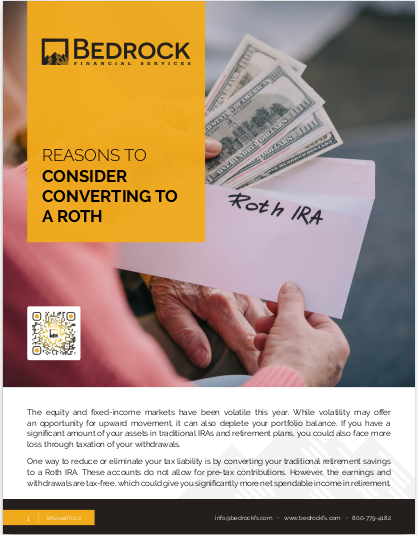Key Takeaways
-
Retirement income planning should be driven by timelines and financial readiness, not just age or generational categories.
-
You can help clients of any age by focusing on life milestones, expected spending patterns, and withdrawal strategies tied to when—not just how old—they expect to stop earning.
Retirement Is a Timeline, Not a Target Date
If you’re still thinking of retirement income planning as something you introduce to clients in their late 50s or 60s, you’re missing opportunities. In 2025, clients across all age groups are looking for stability. Whether they’re 35 or 65, what matters is when they expect to stop working—and how long they’ll need their income to last.
Planning should begin with an understanding of the client’s expected timeline, not their birth year. This allows you to help them reverse-engineer how much income they’ll need and for how long, regardless of age or career stage.
The 3 Retirement Phases That Matter More Than Age
Most professionals use pre-retirement, early retirement, and late retirement as loose categories. But these phases are timeline-based, and every client moves through them at different points.
1. Accumulation Phase
This begins when a client starts earning and saving. For many, it lasts 30 to 40 years. But in 2025, with gig work and career changes more common, the start-stop nature of contributions makes it more complex.
Your role:
-
Encourage consistent saving even in fluctuating income scenarios.
-
Discuss contribution milestones every 5 to 10 years.
-
Prepare clients to adjust strategy if they pause or reduce earnings.
2. Transition Phase
This is the 3- to 7-year window before income fully shifts from employment to portfolio. It’s critical, and often under-planned. Clients in their early 50s or even late 40s may already be in this zone.
Your role:
-
Focus on income bridge strategies like part-time work, phased retirement, or tapping into cash reserves.
-
Help clients prepare emotionally and financially for non-linear income.
-
Reassess withdrawal rate assumptions during this phase.
3. Distribution Phase
This begins once the client stops working and starts drawing from retirement accounts. The distribution timeline could last 25 to 35 years depending on health, location, and inflation.
Your role:
-
Build a withdrawal plan that adapts annually.
-
Coordinate income sources like Social Security, pensions, and personal savings.
-
Focus on tax-efficient sequencing of withdrawals.
What to Ask When Clients Don’t Think It’s Time Yet
Many clients in their 30s and 40s won’t use the word “retirement.” Instead, they talk about financial freedom, early exit from 9-to-5, or pivoting to part-time work.
Here’s how you make retirement planning relevant:
-
“When do you think you’ll stop working full-time?”
-
“How long do you expect to live once you stop working?”
-
“What will you do if you live 10 years longer than expected?”
These aren’t age-specific questions—they’re timeline-based. And they shift the conversation from age to preparedness.
Timeline-Based Income Streams to Prepare For
Income in retirement doesn’t come from a single tap—it’s layered, sequenced, and timed. Help clients see the big picture by mapping out these income streams:
Employment Income (Years 0–5 before retirement)
-
Part-time or consulting work can extend accumulation.
-
Helps delay major portfolio withdrawals.
Social Security (Often starts at age 62–70)
-
Depending on claiming strategy, income can vary significantly.
-
Planning around this timeline affects portfolio drawdown.
Personal Retirement Accounts (Begin withdrawals at 59½ or later)
-
IRAs, TSPs, and 401(k)s have age-based rules but flexible strategies.
-
Required Minimum Distributions (RMDs) start at age 73 in 2025.
Non-Retirement Assets (Can be used at any time)
-
Brokerage accounts, real estate, or passive income sources fill gaps.
-
Ideal for early retirees or unexpected expenses.
Annuities and Pensions (Start dates vary by contract or plan)
-
Lifetime income helps with longevity risk.
-
Use start dates strategically to support fixed expenses.
Risks You Can Only See When You Use Timelines
By working with timelines instead of static retirement ages, you’ll spot risks earlier and build better resilience.
Longevity Risk
-
If a client retires at 55 and lives to 90, that’s 35 years of income to plan for.
-
A timeline view highlights this early so you can build income ladders.
Sequence of Returns Risk
-
Poor market returns in the first 5 years of retirement can have outsized effects.
-
Using timelines lets you allocate assets in tranches—short-term, mid-term, long-term.
Inflation Risk
-
Retirement that lasts 25+ years will experience several inflation cycles.
-
Use spending timelines to match assets that grow with inflation.
Don’t Wait for Clients to Ask
Many clients won’t initiate retirement planning unless prompted. That’s where your timeline-first approach gives you an edge.
Use specific milestones as opportunities to start the conversation:
-
First job: Frame it as the start of the income accumulation timeline.
-
Age 40: Introduce the concept of distribution duration.
-
Age 50: Talk about bridging income from work to retirement.
-
Age 60: Prepare for sequence of returns and long-term risk management.
When you approach these discussions as life-planning based on timelines, not just a retirement product conversation, you position yourself as a strategist—not a salesperson.
Retirement Readiness Is a Moving Target
In 2025, client expectations around retirement are more fluid than ever. You’re not planning for a fixed point—you’re helping people prepare for a multi-decade window of shifting needs and resources.
A client might retire early and re-enter the workforce, or delay retirement due to caregiving, debt, or career satisfaction. Instead of building one static model, prepare multiple outcomes based on milestone-based timelines:
-
Best-case: High-income years continue until 67.
-
Mid-case: Career shift or caregiving at 58.
-
Worst-case: Early retirement at 52 due to burnout or job loss.
Each version needs a tailored income plan.
Helping Clients Think in Terms of “When,” Not “If”
It’s time to shift the narrative. Retirement income planning isn’t just for people with gray hair—it’s for anyone with a finite work timeline. That includes:
-
Tech workers planning to exit by 45
-
Healthcare professionals reducing hours in their 50s
-
Business owners considering succession at 60
When you orient planning around a client’s anticipated lifestyle transitions, you make your advice far more relevant, timely, and valuable.
Your job isn’t to prepare clients for some distant event—it’s to equip them to make smooth transitions at multiple points.
Planning by Timeline Builds Trust
Clients trust professionals who bring them clarity. When you talk timelines, not just target dates, you:
-
Normalize long-term planning for younger clients
-
Show older clients they still have strategic choices
-
Reduce anxiety by offering roadmap options for uncertainty
The result? Better conversations, stronger relationships, and more consistent client engagement across all ages.
Your Timeline-Based Income Strategy Starts Here
Incorporating timelines into retirement income planning doesn’t just expand your audience—it sharpens your value. Whether your clients are a decade from leaving work or three decades away, your ability to help them plan around income durability, flexibility, and purpose will define your success.
If you’re looking for tools, automation, and marketing that support these client conversations, sign up with Bedrock Financial Services. We help financial professionals like you stay relevant, persuasive, and profitable—without chasing trends or relying on outdated pitch decks. Our platform supports a timeline-based approach to planning, prospecting, and presenting.







